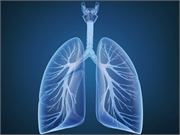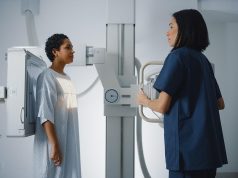Considerable variation found between states in five-year survival, treatment, early diagnosis, screening
WEDNESDAY, Nov. 13, 2019 (HealthDay News) — States can do more to prevent and treat lung cancer, according to a report published online Nov. 13 by the American Lung Association.
Researchers provided a state-specific description of the burden of and opportunities to address lung cancer. Incidence, survival, early diagnosis, surgical treatment, lack of treatment, and screening were considered by state.
According to the report, the lung cancer incidence rate is 59.6 per 100,000 nationally, ranging from 27.1 in Utah to 92.6 in Kentucky. Lung cancer has one of the lowest five-year survival rates (21.7 percent nationally), varying from 16.8 percent in Alabama to 26.4 percent in Connecticut. Overall, 48.5 percent of cases are identified at a late stage when the cancer has spread; 21.5 percent of cases are identified early. The rate of early diagnosis varies from 16.6 percent in Alaska to 28.1 percent in Wyoming. Nationally, a total of 20.6 percent of cases undergo surgery as part of the first course of treatment and 15.4 percent of patients receive no treatment. About 48,000 lives could be saved if everyone currently eligible was screened; screening rates among those at high risk are 4.2 percent nationally.
“Every state can do more to defeat lung cancer, such as increasing the rate of screening among those at high risk, addressing disparities in receipt of treatment, decreasing exposure to radon and secondhand smoke, and eliminating tobacco use,” the authors write.
Copyright © 2019 HealthDay. All rights reserved.








